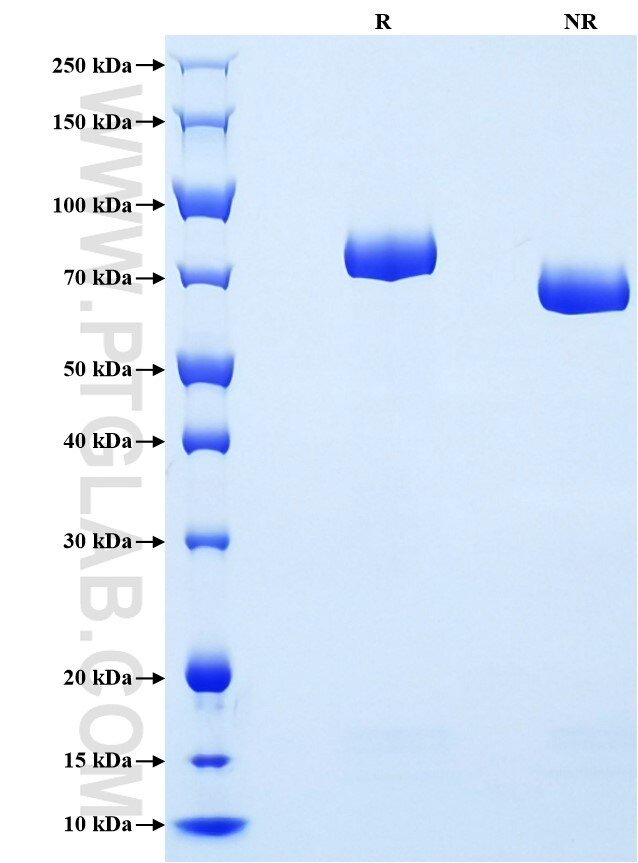Recombinant Human Lactoferrin/LTF protein (His Tag)
Species
Human
Purity
>90 %, SDS-PAGE
Tag
His Tag
Activity
not tested
Cat no : Eg0888
Validation Data Gallery
Product Information
| Purity | >90 %, SDS-PAGE |
| Endotoxin | <0.1 EU/μg protein, LAL method |
| Activity |
Not tested |
| Expression | HEK293-derived Human Lactoferrin protein Gly20-Lys710 (Accession# P02788-1) with a His tag at the C-terminus. |
| GeneID | 4057 |
| Accession | P02788-1 |
| PredictedSize | 77.2 kDa |
| SDS-PAGE | 70-90 kDa, reducing (R) conditions |
| Formulation | Lyophilized from 0.22 μm filtered solution in PBS, pH 7.4. Normally 5% trehalose and 5% mannitol are added as protectants before lyophilization. |
| Reconstitution | Briefly centrifuge the tube before opening. Reconstitute at 0.1-0.5 mg/mL in sterile water. |
| Storage Conditions |
It is recommended that the protein be aliquoted for optimal storage. Avoid repeated freeze-thaw cycles.
|
| Shipping | The product is shipped at ambient temperature. Upon receipt, store it immediately at the recommended temperature. |
Background
Lactoferrin (LTF), known as an iron-binding glycoprotein, is the most abundant element in milk. Prior research has illustrated that LTFbears multi-pharmacological properties, including protection against infection, regulation inflammatory response, antioxidant and antifibrotic process. Moreover, clinical trials have identified the safety of oral administration of bovine LTF and demonstrated the efficacy of LTF on anti-infection, treatment of inflammation, cancer, metabolic disorders.
References:
1. Mayeur S. et al. (2016) Antioxid Redox Signal. 24:813–36. 2. Ono T. et al. (2015) Br J Nutr. 114:159. 3. Yan D. et al. (2013) J Biol Chem. 288:31655–69. 4. Ochoa TJ. et al. (2012) Biochem Cell Biol. 90:457–67. 5. Ye T. et al. (2023) Theranostics. 13(10):3419-3433.

